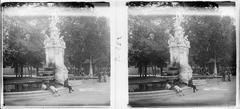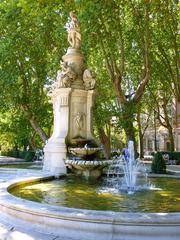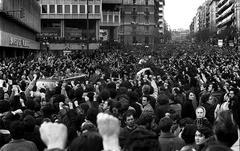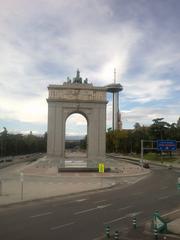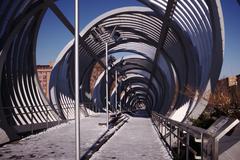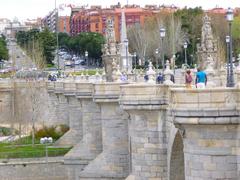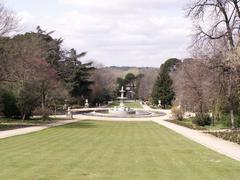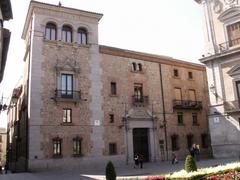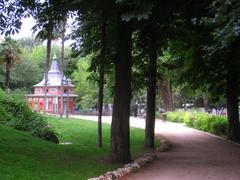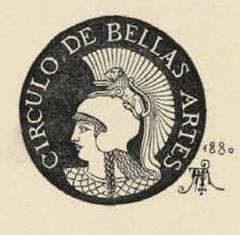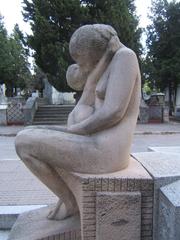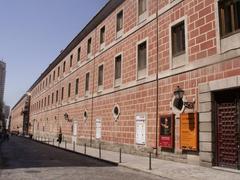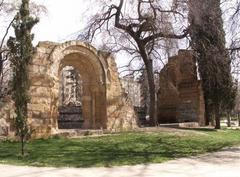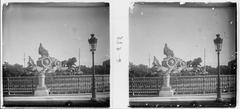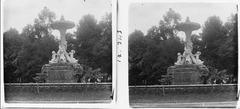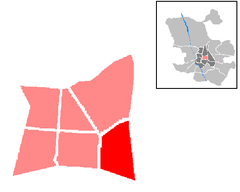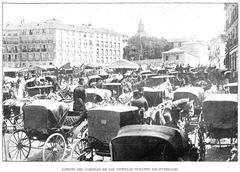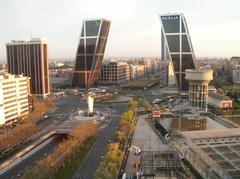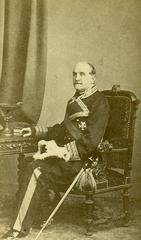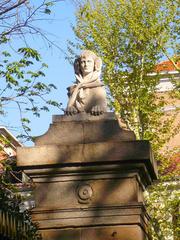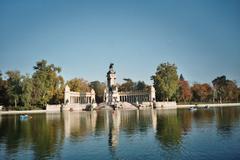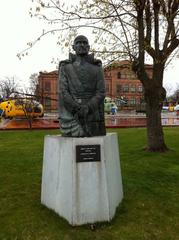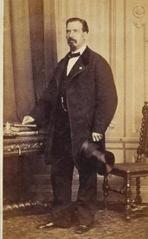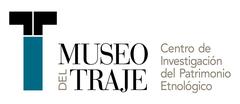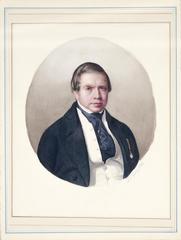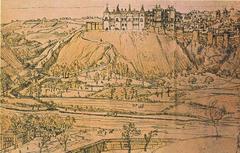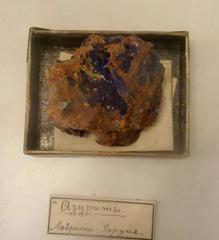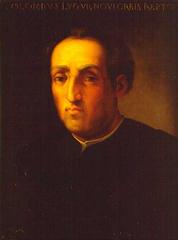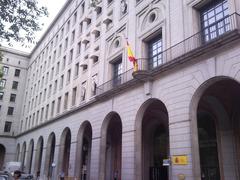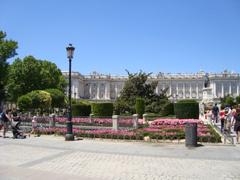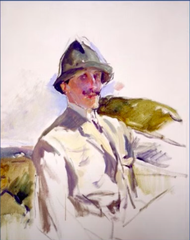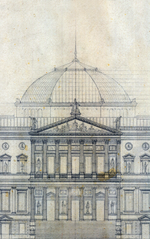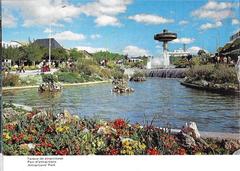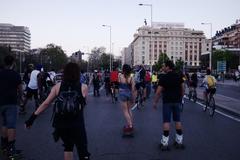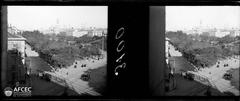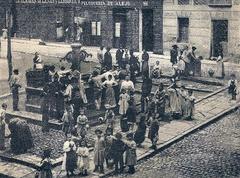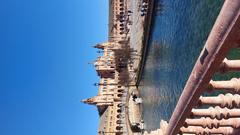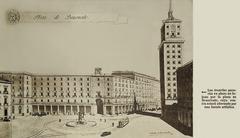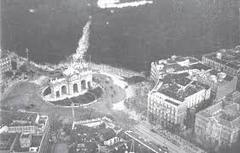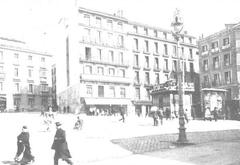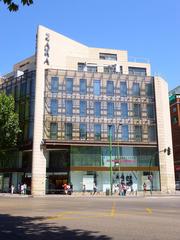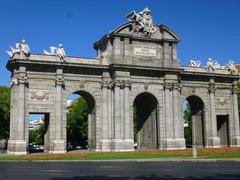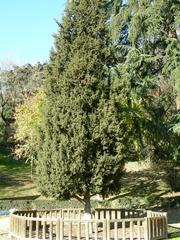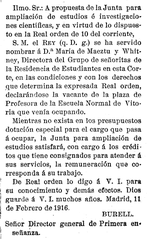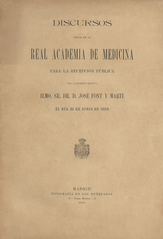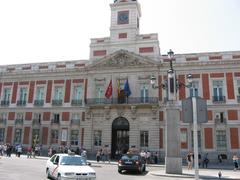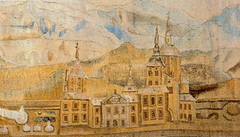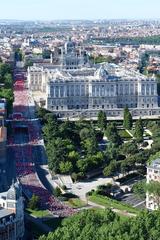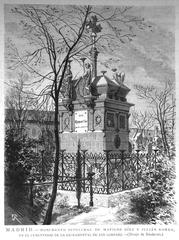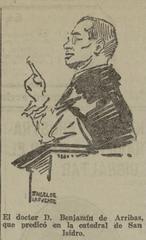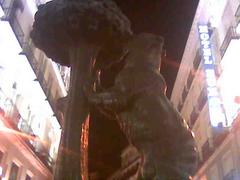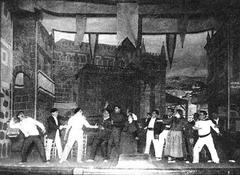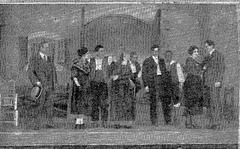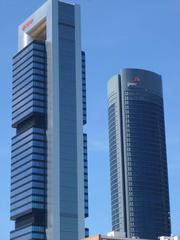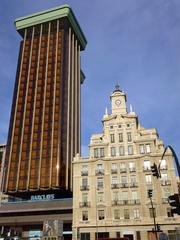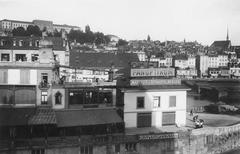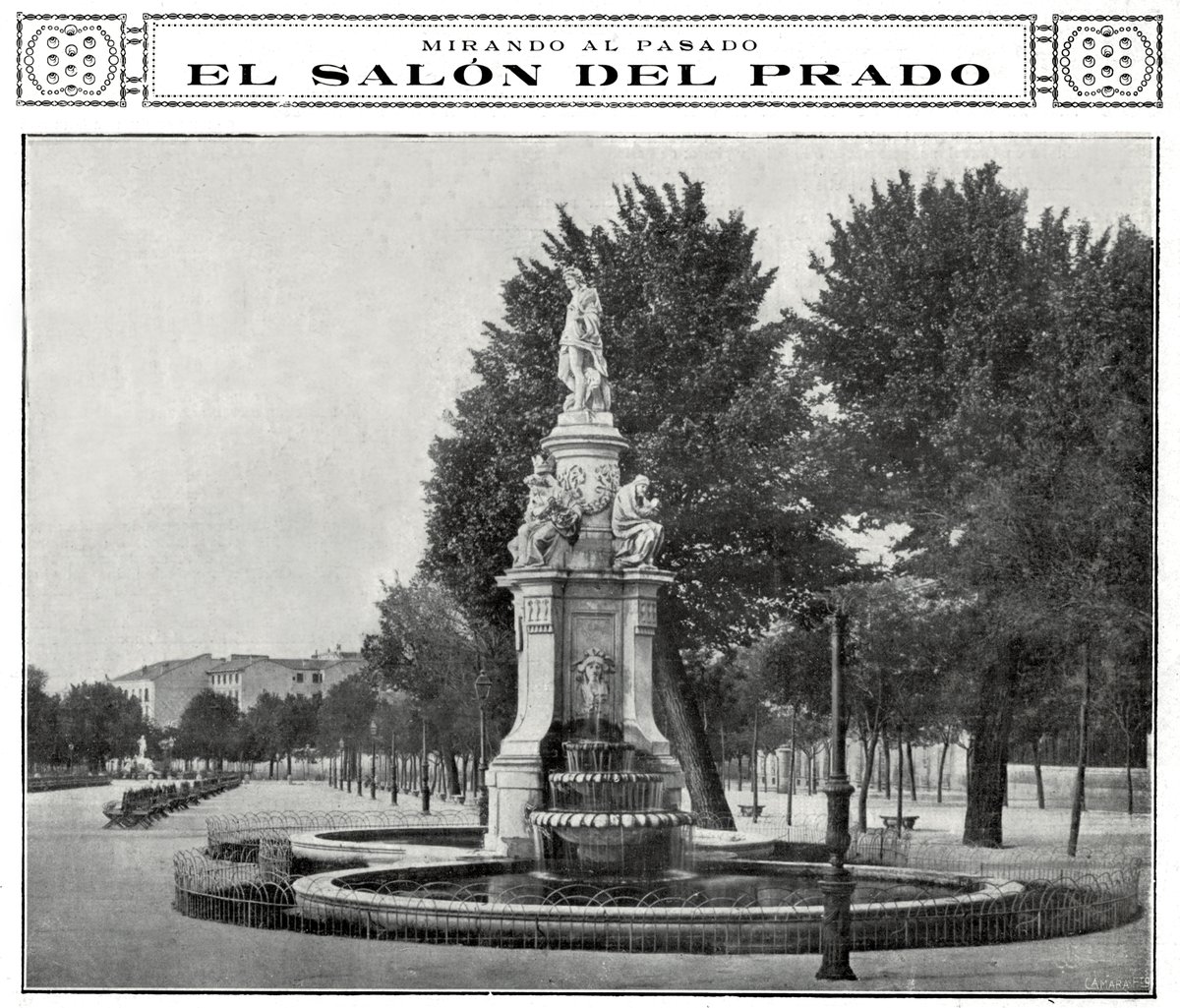
Comprehensive Guide to Visiting Fountain of Apollo, Madrid, Spain
Date: 17/08/2024
Introduction
The Fountain of Apollo in Madrid, also known as Fuente de Apolo, stands as a testament to Spain’s rich historical and cultural heritage. Located on the iconic Paseo del Prado, the fountain was commissioned by King Carlos III in the late 18th century as part of an urban renewal project aimed at beautifying Madrid. Designed by the renowned architect Ventura Rodríguez, the fountain was completed in 1803 and has since become a significant landmark (esmadrid.com).
The Fountain of Apollo is a prime example of neoclassical architecture, characterized by its symmetry, grandeur, and classical elements. The central figure of Apollo, the Greek god of the sun, music, and poetry, is depicted holding a lyre, symbolizing his association with the arts. Surrounding Apollo are four smaller statues representing the Four Seasons, each with distinct attributes that symbolize their respective times of the year (paisajedelaluz.es).
Beyond its architectural and artistic significance, the Fountain of Apollo has been a focal point of cultural impact in Madrid. It represents the enlightened spirit of the Bourbons, promoting the development of culture and science through art. The fountain’s strategic location near major attractions like the Prado Museum and the Thyssen-Bornemisza Museum makes it an essential stop for tourists exploring the city’s Art Walk (esmadrid.com).
This comprehensive guide aims to provide visitors with all the necessary information to make the most of their visit to the Fountain of Apollo. From historical context and artistic significance to practical tips and nearby attractions, this guide covers it all.
Table of Contents
- Exploring the Fountain of Apollo in Madrid: History, Visiting Hours, and Tickets
- Your Complete Guide to Visiting the Fountain of Apollo in Madrid: Tips, Tickets, and More
Exploring the Fountain of Apollo in Madrid: History, Visiting Hours, and Tickets
Origins and Design
The Fountain of Apollo, also known as the Fountain of the Four Seasons, is a significant historical and cultural landmark located on the Paseo del Prado in Madrid. The fountain was designed by the renowned architect Ventura Rodríguez in 1777, during the reign of King Carlos III. The initial design included a large central basin, which was completed in 1780. A provisional statue of Apollo, created by José Panuchi with the assistance of the brothers Roberto and Luis Michel, was placed in the basin that same year (esmadrid.com).
Sculptural Elements
The fountain features intricate sculptural elements that were added over several years. Alfonso Bergaz carved the masks of Circe and Medusa, which serve as spouts for the fountain. These masks were completed in 1780. The final sculpture of Apollo and the figures representing the Four Seasons were commissioned to the sculptor Manuel Álvarez, also known as “The Greek.” By December 1781, Álvarez had finished the models for these sculptures (paisajedelaluz.es).
Completion and Inauguration
The completion of the Fountain of Apollo was accelerated by King Carlos IV and his wife, who wanted to inaugurate the monument on the occasion of the wedding of the then-Prince of Asturias, who would later become King Fernando VII, with María Antonia de Nápoles. The fountain was finally completed in 1802, and it was unveiled in 1803 during the reign of Charles IV (esmadrid.com).
Symbolism and Artistic Significance
Apollo, the God of the arts, medicine, and poetry, is depicted carrying a lyre and is accompanied by allegorical sculptures of the Four Seasons. As the Sun God, Apollo is responsible for the birth and change of seasons. The Four Seasons are represented as follows: Spring carries a basket of flowers, Summer holds a bundle of grain, Autumn has a bunch of grapes, and Winter wears a crown of twigs. The masks of Circe and Medusa add a mythological dimension to the fountain, representing a sorceress and a female monster who could turn anyone who looked her in the eyes to stone (esmadrid.com).
Restoration and Preservation
Over the years, the Fountain of Apollo has undergone several restoration efforts to preserve its artistic and historical value. The fountain is considered one of the best classical statues erected in Spain due to the elegance of its proportions and the capture of divine movement and balance. The restoration efforts have ensured that the fountain remains a significant cultural landmark in Madrid (esmadrid.com).
Location and Surroundings
The Fountain of Apollo is strategically located on the Paseo del Prado, one of Madrid’s most famous boulevards. This area is also home to other iconic fountains, such as the Cibeles and Neptune fountains, making it a popular tourist route known as the Art Walk. The Prado Museum, one of the world’s leading art galleries, is also located nearby, boasting works by Velázquez, Goya, El Greco, Titian, Rubens, and Hieronymus Bosch, among others (esmadrid.com).
Visiting Information
For tourists visiting Madrid, the Fountain of Apollo is an essential stop. The fountain is easily accessible and is located near several docking stations, including Calle Antonio Maura, 15, and Plaza Cibeles. Visitors can also explore nearby attractions such as the Thyssen-Bornemisza National Museum, which offers a journey through seven centuries of European art, and the official Madrid Shop for artisan souvenirs. While there are no specific visiting hours or ticket requirements for the fountain itself, nearby attractions like the Prado Museum may have their own schedules and ticketing information (esmadrid.com).
Travel Tips and Accessibility
When visiting the Fountain of Apollo, consider taking a leisurely walk along the Paseo del Prado to fully appreciate the area’s beauty. The Art Walk route is highly accessible, with well-maintained pathways suitable for wheelchairs and strollers. Public transportation options, including buses and metro services, make it easy to reach the location. Be sure to check local guidelines and opening hours for nearby attractions to plan your visit effectively.
Cultural Impact
The Fountain of Apollo has had a lasting cultural impact on Madrid and its residents. It represents the enlightened spirit that the Bourbons wanted to encourage in the Salon del Prado, promoting the development of culture and science. The fountain is not just a piece of art but a symbol of the city’s rich historical and cultural heritage (esmadrid.com).
FAQ
Q: What are the visiting hours for the Fountain of Apollo? A: The Fountain of Apollo itself does not have specific visiting hours as it is situated in a public area. However, nearby attractions like the Prado Museum do have set opening hours.
Q: Is there an entrance fee to visit the Fountain of Apollo? A: No, there is no entrance fee to visit the Fountain of Apollo as it is located in a public space.
Q: Are there guided tours available for the Fountain of Apollo? A: While there are no specific guided tours for the Fountain of Apollo, many city tours of Madrid include a stop at the fountain along with other historical sites.
Conclusion
The Fountain of Apollo stands as a testament to Madrid’s rich history and cultural heritage. Its intricate design, mythological symbolism, and artistic significance make it a must-visit landmark for anyone exploring the city. The fountain not only adds to the aesthetic beauty of the Paseo del Prado but also serves as a reminder of the city’s commitment to promoting culture and science through art.
Your Complete Guide to Visiting the Fountain of Apollo in Madrid: Tips, Tickets, and More
Introduction
Located in the heart of Madrid, the Fountain of Apollo is a captivating historical site that draws visitors year-round. This guide will provide you with all the essential information for a memorable visit, including the best times to go, how to get there, what to bring, nearby attractions, photography tips, accessibility options, safety tips, local etiquette, dining options, shopping, and special events. Whether you’re a history buff, an art lover, or simply looking for a beautiful spot to explore, the Fountain of Apollo has something for everyone.
Best Time to Visit
The Fountain of Apollo, located in the heart of Madrid, is an outdoor attraction that can be enjoyed year-round. However, the best times to visit are during the late spring (April to June) and early fall (September to October) when the weather is mild and pleasant. During these periods, temperatures range from 15°C to 25°C (59°F to 77°F), making it comfortable for walking and sightseeing. Avoid visiting during the peak summer months (July and August) when temperatures can soar above 34°C (93°F), making outdoor activities less enjoyable (Travellers Worldwide).
Getting There
The Fountain of Apollo is situated in the Paseo del Prado, one of Madrid’s most iconic boulevards. The area is well-served by public transportation. The nearest metro stations are Banco de España (Line 2) and Atocha (Line 1). Several bus lines also pass through the area, including lines 10, 14, 27, 34, 37, and 45. For those preferring to walk, the fountain is within a short distance from other major attractions like the Prado Museum and the Retiro Park.
What to Bring
- Sun Protection: Given Madrid’s sunny climate, especially in the summer, it’s essential to bring sun protection. This includes a hat or cap, sunglasses, and a high SPF sunscreen (Madrid Traveller).
- Comfortable Footwear: The area around the Fountain of Apollo is best explored on foot. Comfortable walking shoes are recommended to navigate the cobblestone streets and pathways.
- Water Bottle: Staying hydrated is crucial, particularly during the warmer months. Carry a refillable water bottle to keep yourself hydrated as you explore the area.
Nearby Attractions
The Fountain of Apollo is surrounded by several other notable landmarks, making it a convenient stop on a broader sightseeing tour.
- Prado Museum: Just a short walk away, the Prado Museum houses an extensive collection of European art, including works by Velázquez, Goya, and El Greco. It’s a must-visit for art enthusiasts (Madrid Traveller).
- Retiro Park: Adjacent to the Prado Museum, this expansive park offers a peaceful retreat with its beautiful gardens, sculptures, and the iconic Crystal Palace.
- Thyssen-Bornemisza Museum: Another nearby museum, it features a diverse collection of art from the 13th to the 20th centuries, including works by Caravaggio, Rubens, and Picasso.
Photography Tips
The Fountain of Apollo is a popular spot for photography, thanks to its intricate design and historical significance. Here are some tips to capture the best shots:
- Golden Hour: Visit during the early morning or late afternoon when the natural light is soft and golden. This enhances the details of the fountain and creates a warm, inviting atmosphere.
- Angles and Perspectives: Experiment with different angles and perspectives. Try capturing the fountain from a low angle to emphasize its grandeur or from a distance to include the surrounding landscape.
- Night Photography: The fountain is beautifully illuminated at night. Use a tripod for long-exposure shots to capture the serene ambiance and the play of lights on the water.
Accessibility
The area around the Fountain of Apollo is generally accessible to visitors with mobility issues. The pathways are wide and well-maintained, and there are ramps and elevators in nearby public buildings and metro stations. However, some areas may have cobblestone surfaces, which can be challenging for wheelchair users. It’s advisable to check accessibility options in advance if you have specific needs.
Safety Tips
Madrid is generally a safe city, but it’s always wise to take basic precautions:
- Pickpocketing: Be aware of your surroundings and keep your belongings secure, especially in crowded areas. Use a money belt or a crossbody bag with zippers to deter pickpockets.
- Emergency Numbers: Familiarize yourself with local emergency numbers. In Spain, the general emergency number is 112.
- Stay Hydrated: As mentioned earlier, staying hydrated is crucial, especially during the hot summer months. Drink plenty of water and take breaks in shaded areas.
Local Etiquette
- Language: While many people in Madrid speak English, learning a few basic Spanish phrases can enhance your experience and show respect for the local culture.
- Tipping: Tipping is not mandatory in Spain, but it’s appreciated. A small tip (5-10%) in restaurants and cafes is customary if you receive good service.
- Dress Code: Madrid is a cosmopolitan city, and casual attire is generally acceptable. However, if you plan to visit religious sites or upscale restaurants, dressing modestly and appropriately is recommended.
Dining Options
The area around the Fountain of Apollo offers a variety of dining options, from casual cafes to fine dining restaurants. Here are a few recommendations:
- Café Prado: Located near the Prado Museum, this café offers a selection of Spanish pastries, sandwiches, and coffee. It’s a great spot for a quick snack or a light lunch.
- Restaurante Botín: Known as the oldest restaurant in the world, Botín serves traditional Spanish cuisine, including its famous roast suckling pig. It’s a bit of a walk from the fountain but worth the visit for a unique dining experience.
- Mercado de San Miguel: A historic market offering a wide range of tapas, seafood, and local delicacies. It’s a lively place to sample different Spanish dishes and enjoy a casual meal.
Shopping
For those interested in shopping, the nearby Gran Vía and Calle de Serrano offer a mix of high-end boutiques, international brands, and local shops. Whether you’re looking for fashion, souvenirs, or unique Spanish products, these shopping streets have something for everyone.
Events and Festivals
Madrid hosts numerous events and festivals throughout the year. If you’re visiting in August, don’t miss the Verbena de la Paloma, a traditional summer festival featuring street parties, music, and dancing (Madrid Traveller). Check local event calendars to see if any special events coincide with your visit to enhance your experience.
FAQ
Q: What are the visiting hours for the Fountain of Apollo? A: The Fountain of Apollo is an outdoor attraction and can be visited at any time. However, the best times are during daylight hours for safety and visibility.
Q: How much are tickets to the Fountain of Apollo? A: The Fountain of Apollo is free to visit. There are no entry fees.
Q: Are there guided tours available? A: While there are no specific guided tours for the Fountain of Apollo, many city tours include it as part of their itinerary. Check with local tour operators for more details.
Conclusion
The Fountain of Apollo is a must-see historical site in Madrid, offering a blend of cultural significance, artistic beauty, and natural charm. By following these tips and guidelines, you can make the most of your visit. Don’t forget to explore the nearby attractions, savor the local cuisine, and immerse yourself in the vibrant culture of Madrid. For more updates and information, follow our social media channels or download our mobile app Audiala.
Conclusion
Visiting the Fountain of Apollo in Madrid is more than just a sightseeing experience; it is a journey through history, art, and culture. The fountain, with its intricate design and rich symbolism, stands as a monument to the artistic and architectural advancements of the neoclassical era. Its location on the Paseo del Prado, amidst other iconic landmarks like the Prado Museum and Retiro Park, makes it a central feature of Madrid’s cultural landscape (esmadrid.com).
The Fountain of Apollo’s enduring appeal lies in its ability to capture the enlightened spirit of its time, promoting culture and science through its artistic representations. Whether you are an art enthusiast, a history buff, or simply looking for a beautiful spot to relax, the Fountain of Apollo offers something for everyone. The nearby attractions, dining options, and shopping venues further enhance the visitor experience, making it a must-visit destination in Madrid (paisajedelaluz.es).
By following the tips and guidelines provided in this guide, visitors can fully appreciate the historical and cultural significance of the Fountain of Apollo. From the best times to visit and what to bring, to photography tips and local etiquette, this guide ensures a memorable and enriching experience. For more information and updates on Madrid’s historical sites, visitors are encouraged to download the mobile app Audiala and follow related social media channels (Travellers Worldwide).
References
- Esmadrid.com, n.d., ‘Fuente de Apolo (Fuente de las Cuatro Estaciones)’ source
- Paisajedelaluz.es, n.d., ‘Fuente de Apolo’ source
- Esmadrid.com, n.d., ‘Mythological Madrid’ source
- Travellers Worldwide, n.d., ”Best Time to Visit Madrid’ source
- Madrid Traveller, n.d., ‘Things to Do in Madrid in August’ source


